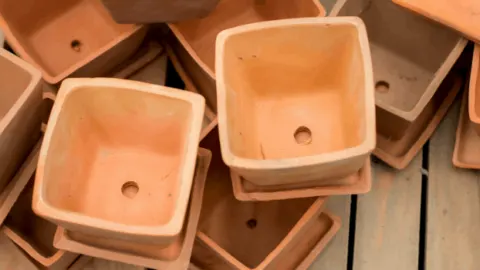There are quite a few variables that one has to consider before bringing a plant into their home.
On top of moisture, you have to consider how much water to add, the temperature to place them in, overall humidity, and plenty of other factors.
But, one factor that people don’t consider is container in which your plant is kept. Sure, the soil inside it is equally important, but what happens to the water when you give your plant a thorough watering session?
This is where drainage holes come into play. They are located on the underside of a pot.
Their sole purpose is to prevent the water from settling at the bottom of the container.
In this article, we will explore why you should have them, what will happen if they aren’t present, and which plants need drainage holes.
Some plants are pickier when it comes to sitting in water. The root system, in general, usually doesn’t do well when placed into a pot without drainage holes.
Keep reading to gain knowledge about this commonly overseen aspect of plant care!
Table of Contents
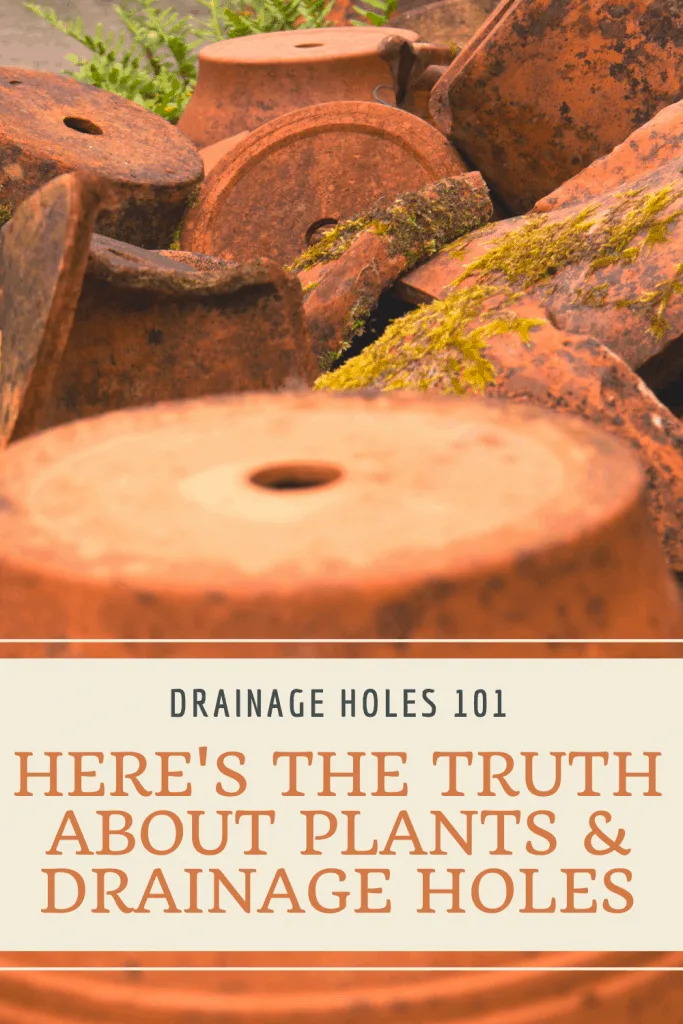
What are drainage holes?
We briefly touched upon drainage holes, but let’s dive in a bit deeper. Typically, the average container will have at least three or four holes on the bottom.
You can either buy one with predrilled cavities or do it yourself with a handy tool. If you opt for the second route, be careful.
Creating your own drainage holes can cause cracks that will eventually break the container. There should be enough to spread out over the bottom of the pot evenly.
Why are drainage holes needed?
Obviously, the real reason for having drainage holes on the bottom of your pot is to make sure that the water leaves the container.
But, why is this so important? Well, when water trickles down throughout the soil, it needs a place to exit. Upon the chance that there are no holes, the water will simply sit there.
Most plants don’t respond well to such circumstances. In fact, it is among the most common reasons behind root rot.
Roots do need a good amount of water, not to the extent you might imagine. Without allowing the soil to dry out, the roots can’t get enough oxygen, instead absorbing too much water.
This then leads to overall decay, or root rot.
But don’t worry! Your infected plant can be salvaged if you catch it early enough.
We have an article dedicated to the symptoms of root rot for those who want to inform themselves!
PLANTS THAT CAN SURVIVE WITHOUT DRAINAGE HOLES
The fact of the matter is that every plant needs water in order to survive, even those desert-dwelling individuals.
But, what about drainage holes?
Is it critical that your containers have these small openings so that the moisture can be drained out?
But, before we tackle this question, let’s answer another. Do all plants need ample drainage?
It may be somewhat surprising for you to find out that there are a number of plants that don’t necessarily require drainage holes on the bottom of their container.
We’ve compiled a bit of information on a few examples, and how people go about making them survive despite not having this feature.
CHINESE EVERGREEN
Typically adored for their silver-lined, green leaves, the Chinese Evergreen is a common houseplant for many. When it comes to their overall moisture needs, they prefer to have a relatively wet environment.
The soil should be kept evenly moist without sitting in water for too long. This is why it is advised to wait and let the soil dry out some before adding more water.
Too much water quickly leads to root rot with the Chinese Evergreen, but they don’t necessarily need drainage holes. If they aren’t placed in these pots, then the container will have to have a built-in drainage system.
This can be through the use of stones being underneath the bottom layer of soil. You’ll also have to take note of how quickly you pour the water. Disturbing the soil will render this solution quite useless.
SCHEFFLERA

Commonly known as the Dwarf Umbrella Tree, this flowering plant is an interesting asset to any home. They come in a number of varieties that all subtly range in foliage color and size.
The real reason why they’re sought out is due to their easy maintenance. They like to have soil that is kept at a moderate saturation level. It’s hard to find the right balance since waterlogging can lead to damaged leaves.
Although it is smarter to invest in a pot with drainage holes, you don’t need this for Schefflera.
They can survive when settled in a container that has built-in hydro stones. These help to absorb the water so that the roots don’t simply sit in the water and become soggy.
DUMB CANE
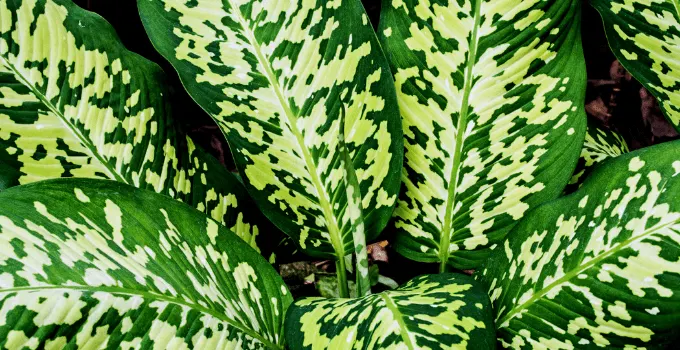
Our last example is a plant that absolutely needs to be watered on a daily basis. These tropical individuals are actually considered to be among the popular houseplants.
Their dark green leaves are large and prominent, with speckled areas of yellow and ivory. The selling point for many is that they aren’t particularly picky. The one factor that they can’t survive without is plenty of water.
Given this fact, you may think that they need drainage holes in their pots.
Dumb Cane plants will get water in whichever way that they can.
This includes both misting, and a routine watering schedule. This makes sense since they naturally occur in rainforests.
These plants are known for sucking up water pretty quickly, making it less important to have a drainage hole underneath the pot.
But, this doesn’t mean that they wouldn’t benefit from these cavities.
The only way that you can go about having drainage holes is to be extremely careful in how much water you give to your Dumb Cane plant. But, this may lead to stunted growth, as they need their water.
Before we dive into any conclusions, let’s take a look at the other end of the spectrum: plants that are more likely to need drainage holes.
PLANTS THAT CAN’T SURVIVE WITHOUT DRAINAGE HOLES
The previous section may have opened your eyes to a few plants that can survive without the presence of drainage holes.
But, how common is that? The truth of the matter is that there are more than a few species of flora that can’t handle being placed into a pot without ample drainage.
Let’s identify which of these plants fall under this category.
RHODODENDRON
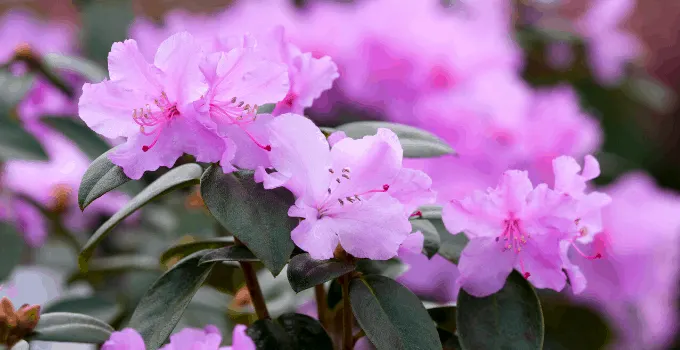
Looking at the watering needs of Rhododendron, they’re quite dependent on moisture given within a week.
This is in large part due to their large flowers.
Being watered twice a week means that the roots would sit in the moisture if the pot didn’t have drainage holes. This is why it is crucial for Rhododendron!
AZALEA
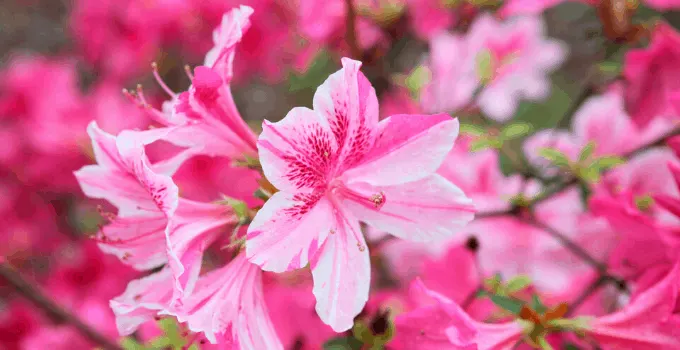
Unlike Rhododendron, Azalea plants don’t need to have copious amounts of water. They’re the opposite.
This might not make them sound as if they can handle any pot, drainage or not.
This isn’t true! One of the biggest problems that Azalea faces is when the roots become soggy. For this reason, they absolutely depend on drainage holes.
Both of these plants are quite different in overall needs in regards to water. Rhododendron relies on a good amount of moisture in order to survive, while Azalea detests soggy soil.
The key factor is that both of these plants need drainage holes, despite their differences. So then, can plants really survive without these ports?
CONCLUSION: TO DRAIN OR NOT TO DRAIN?
We’ve been able to compare the differences between plants that need drainage holes, and ones that can survive without these additions. But, are those who can survive without drainage holes simply outliers?
Let’s first remind ourselves of the plants that can still grow without drainage holes on the underside of the pots.
All three of these examples were able to survive if they had another way to have the water drained. This was either through the use of hydro stones, or some other built-in drainage system.
In the case of the Chinese Evergreen, monitoring the amount of water that you give it is the best way to avoid root rot.
In the case of plants that do need drainage holes, it can happen when the individual needs different things.
Rhododendron can’t survive without lots of water, and yet without drainage holes, the roots can rot away. Azalea, on the other hand, has the opposite problem. Sitting in water for too long can result in the same issue.
Regardless of if a plant should have drainage holes or not, the answer seems to be that having them will yield better results. All of these individuals do better when given a quick way to rid themselves of excess water.
You can provide alternative methods such as hydro stones, but they aren’t as effective as drainage holes.
We highly recommend that you invest in a pot that has drainage holes! You can even opt to make your own. Just be sure to do your research first, as the wrong technique can lead to cracks in the container.
In general, you should supply your plant with drainage holes so that they can thrive without running the risk of root rot!

Daniel has been a plant enthusiast for over 20 years. He owns hundreds of houseplants and prepares for the chili growing seasons yearly with great anticipation. His favorite plants are plant species in the Araceae family, such as Monstera, Philodendron, and Anthurium. He also loves gardening and is growing hot peppers, tomatoes, and many more vegetables.

